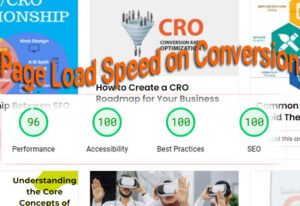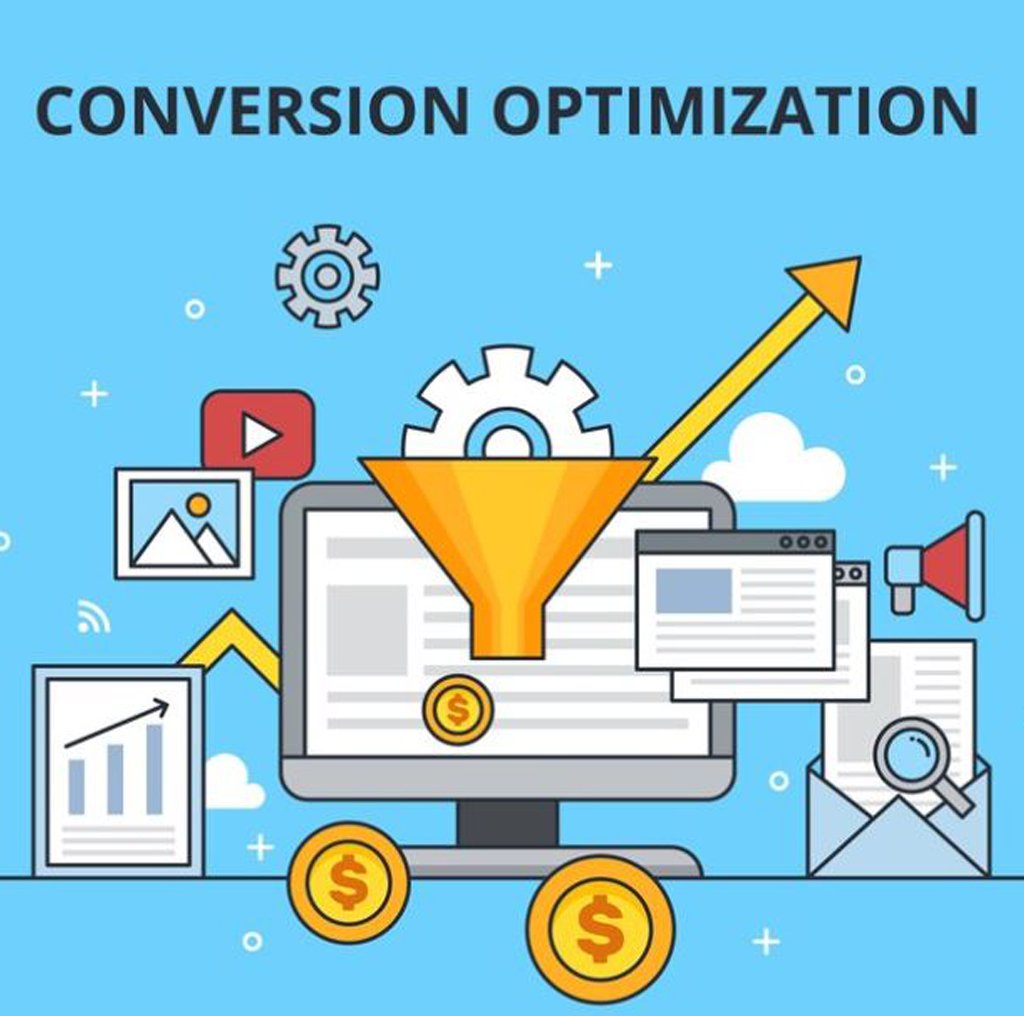The Impact of Page Load Speed on Conversion Rates
With the proliferation of high-speed internet and mobile devices, users demand quick and seamless online experiences. One critical factor that significantly influences user experience is page load speed. This seemingly simple aspect of web performance can have profound implications for a website’s success, particularly concerning conversion rates.
Page load speed refers to the time it takes for a web page to fully display its content to a user after they have requested it. It encompasses various elements such as server response time, file sizes, image compression, and the overall design of the web page. A faster page load speed can lead to improved user satisfaction, better search engine rankings, and higher conversion rates. Conversely, slow-loading pages can frustrate users, leading to higher bounce rates and lost revenue opportunities.
This comprehensive exploration delves into the relationship between page load speed and conversion rates, examining why speed matters, the factors influencing load times, and strategies to improve performance. By understanding and optimizing page load speed, businesses can enhance user experience, increase conversions, and drive sustainable growth.
The Importance of Page Load Speed
User Expectations and Behavior
Users today expect websites to load quickly. According to a study by Google, 53% of mobile site visits are abandoned if pages take longer than three seconds to load. This statistic highlights the critical importance of speed in retaining visitors. Users are less likely to engage with a website that is slow, leading to higher bounce rates and lost opportunities for conversion.
Impact on Search Engine Rankings
Page load speed is not only crucial for user experience but also for search engine optimization (SEO). Search engines like Google consider page speed as a ranking factor. Faster-loading pages are more likely to rank higher in search results, driving more organic traffic to the site. This increased visibility can lead to more opportunities for conversions.
Mobile Experience
With the increasing use of mobile devices for browsing and shopping, page load speed on mobile has become even more critical. Mobile users often have slower internet connections compared to desktop users, making speed optimization essential. A mobile-friendly, fast-loading website can significantly enhance user experience and improve conversion rates.
The Relationship Between Page Load Speed and Conversion Rates
Conversion rate is the percentage of visitors who complete a desired action on a website, such as making a purchase, filling out a form, or signing up for a newsletter. Page load speed directly impacts conversion rates in several ways:
User Engagement and Retention
A fast-loading website provides a positive user experience, encouraging visitors to stay longer and explore more pages. This increased engagement can lead to higher conversion rates. Conversely, slow-loading pages can frustrate users, leading them to abandon the site and seek alternatives.
Trust and Credibility
Page load speed can influence a user’s perception of a brand’s trustworthiness and credibility. A slow website can be seen as unprofessional or unreliable, potentially deterring users from making a purchase or providing personal information. On the other hand, a fast-loading website can instill confidence and encourage conversions.
Shopping Cart Abandonment
In e-commerce, page load speed is crucial during the checkout process. Slow load times can lead to higher shopping cart abandonment rates, as users become impatient and abandon their purchases. Ensuring a fast and seamless checkout process can reduce abandonment and increase conversion rates.
Factors Influencing Page Load Speed
Several factors contribute to page load speed, including server performance, website design, and content optimization. Understanding these factors can help businesses identify and address performance issues.
Server Performance
The performance of the server hosting the website plays a significant role in page load speed. Factors such as server location, bandwidth, and server response time can impact how quickly a website loads. Using a reliable hosting provider and optimizing server settings can improve performance.
Image Optimization
Images are often the largest files on a web page and can significantly impact load times. Optimizing images by compressing them and using appropriate file formats can reduce their size and improve page speed. Additionally, using responsive images that adjust to different screen sizes can enhance performance on mobile devices.
Browser Caching
Browser caching stores static files, such as images, CSS, and JavaScript, on a user’s device, reducing the need to reload these files on subsequent visits. Implementing effective caching strategies can significantly improve page load speed for returning visitors.
Content Delivery Network (CDN)
A CDN distributes website content across multiple servers located in different geographic regions. By serving content from a server closest to the user, a CDN can reduce load times and improve performance. Using a CDN is particularly beneficial for websites with a global audience.
Minimizing HTTP Requests
Each element on a web page, such as images, scripts, and stylesheets, requires an HTTP request to load. Reducing the number of HTTP requests by minimizing the use of external resources and combining files can improve page load speed.
Asynchronous Loading
Asynchronous loading allows certain elements of a web page to load independently of others. This approach can improve perceived load times by ensuring that critical content is displayed quickly, even if other elements are still loading.
Optimizing CSS and JavaScript
Large or poorly optimized CSS and JavaScript files can slow down page load times. Minifying these files by removing unnecessary characters, whitespace, and comments can reduce their size and improve performance. Additionally, deferring the loading of non-critical scripts can enhance load times.
Strategies to Improve Page Load Speed
Improving page load speed requires a combination of technical optimizations and best practices. Here are some effective strategies to enhance performance:
1. Optimize Images
- Compress Images: Use tools like TinyPNG or ImageOptim to compress images without losing quality.
- Use Appropriate Formats: Choose the right image format (e.g., JPEG for photos, PNG for graphics with transparency).
- Implement Lazy Loading: Load images only when they are about to enter the viewport, reducing initial load times.
2. Use a Content Delivery Network (CDN)
- Distribute Content: Utilize a CDN to distribute website content across multiple servers, reducing load times for users in different geographic locations.
- Leverage Edge Servers: Serve content from edge servers closest to the user for faster delivery.
3. Enable Browser Caching
- Set Expiry Dates: Configure cache headers to set expiry dates for static resources, allowing browsers to store and reuse these files.
- Use Cache-Control: Implement Cache-Control headers to specify caching policies for different types of content.
4. Minimize HTTP Requests
- Combine Files: Combine CSS and JavaScript files to reduce the number of HTTP requests.
- Inline Critical CSS: Inline critical CSS directly into the HTML to reduce external file requests for above-the-fold content.
5. Optimize CSS and JavaScript
- Minify Files: Use tools like UglifyJS and CSSNano to minify CSS and JavaScript files, reducing their size.
- Defer Non-Critical Scripts: Defer the loading of non-essential JavaScript until after the main content has loaded.
6. Improve Server Performance
- Choose Reliable Hosting: Select a reputable hosting provider with optimized server configurations.
- Upgrade to a VPS or Dedicated Server: Consider upgrading to a Virtual Private Server (VPS) or dedicated server for better performance.
7. Reduce Redirects
- Minimize Redirects: Avoid unnecessary redirects, as they add additional HTTP requests and increase load times.
- Implement Direct Links: Use direct links to the final destination whenever possible.
8. Optimize Web Fonts
- Limit Font Variations: Use only the necessary font weights and styles to reduce file sizes.
- Implement Font Display Swap: Use the
font-display: swap;property to ensure text is visible while web fonts are loading.
9. Enable Gzip Compression
- Compress Files: Enable Gzip compression on the server to reduce the size of HTML, CSS, and JavaScript files, improving load times.
10. Monitor and Test Performance
- Use Performance Tools: Utilize tools like Google PageSpeed Insights, GTmetrix, and Pingdom to monitor and test page load speed.
- Conduct Regular Audits: Perform regular performance audits to identify and address any issues affecting load times.
Case Studies: The Impact of Page Load Speed on Conversion Rates
Examining real-world examples can provide valuable insights into the impact of page load speed on conversion rates. Here are a few case studies highlighting the benefits of optimizing page load speed:
Case Study 1: Amazon
Amazon, the e-commerce giant, conducted a study that revealed a 100-millisecond delay in page load time could result in a 1% decrease in sales. Given Amazon’s vast revenue, even a slight improvement in page load speed could translate to significant financial gains. By focusing on speed optimization, Amazon ensures a seamless shopping experience, driving higher conversion rates and customer satisfaction.
Case Study 2: Walmart
Walmart, another major player in the e-commerce industry, found that for every one-second improvement in page load time, conversions increased by up to 2%. Walmart’s focus on optimizing page load speed led to a better user experience, higher engagement, and increased sales. The company’s investment in performance optimization paid off with substantial improvements in conversion rates.
Case Study 3: Mobify
Mobify, a mobile e-commerce platform, reported that reducing page load time by 100 milliseconds resulted in a 1.11% increase in session-based conversion rates and a 1.55% increase in average order value. These findings underscore the importance of speed optimization for mobile experiences, where users often have less patience for slow-loading pages.
The Future of Page Load Speed and Conversion Rates
As technology continues to evolve, the importance of page load speed will only grow. Emerging trends and innovations will shape the future of web performance and its impact on conversion rates. Here are a few key developments to watch:
Progressive Web Apps (PWAs)
Progressive Web Apps (PWAs) combine the best features of web and mobile applications, offering fast, reliable, and engaging user experiences. PWAs load quickly, even on slow networks, and provide offline capabilities, making them an excellent solution for improving page load speed and conversion rates.
Accelerated Mobile Pages (AMP)
Accelerated Mobile Pages (AMP) is an open-source framework designed to create fast-loading mobile pages. By using AMP, businesses can deliver content quickly and efficiently, improving user experience and increasing the likelihood of conversions. As mobile usage continues to rise, AMP will play a crucial role in optimizing performance.
Artificial Intelligence (AI) and Machine Learning
AI and machine learning can be leveraged to analyze user behavior, predict performance issues, and optimize page load speed in real time. By harnessing the power of AI, businesses can proactively address performance bottlenecks and ensure a seamless user experience, driving higher conversion rates.
5G Technology
The rollout of 5G technology promises significantly faster internet speeds and lower latency, which will enhance page load times and overall web performance. Businesses that optimize their websites to take advantage of 5G capabilities will be well-positioned to provide superior user experiences and boost conversion rates.
Page load speed is a critical factor that directly impacts conversion rates. In an era where users demand fast and seamless online experiences, businesses cannot afford to overlook the importance of speed optimization. By understanding the factors that influence page load speed and implementing effective strategies to improve performance, businesses can enhance user experience, increase engagement, and drive higher conversion rates.
Real-world case studies demonstrate the tangible benefits of optimizing page load speed, from increased sales and customer satisfaction to improved search engine rankings and reduced shopping cart abandonment. As technology continues to evolve, emerging trends like Progressive Web Apps, Accelerated Mobile Pages, AI, and 5G will further shape the future of web performance and its impact on conversions.
Ultimately, investing in page load speed optimization is not just about meeting user expectations; it’s about creating a competitive advantage in the digital marketplace. By prioritizing speed, businesses can unlock new opportunities, achieve their objectives, and thrive in an increasingly fast-paced online world.


